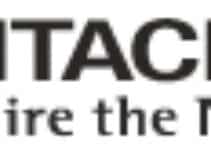NASA is testing a high-tech backpack containing technology that could be used by astronauts to create highly detailed maps of the lunar surface.

NASA and industry partners Torch Technologies and Aeva have developed a remote-sensing mapping system called the Kinematic Navigation and Cartography Knapsack (KNaCK) that uses mobile lidar scanner technology to create ultra-high-resolution maps in real time as an astronaut walks across the surface of the moon. The gear can make millions of measurement points per second and can also be used for navigation to improve safety for astronauts crossing the lunar surface on foot and also in a rover.
The technology is set to be used in the upcoming Artemis missions that will see the first crewed lunar landings since 1972, and while it’s currently carried in a backpack, the plan is to incorporate it into a smaller device that can attach to an astronaut’s helmet.
KNaCK is expected to play an important role on lunar missions as astronauts will be exploring the moon’s south pole, much of which is in deep shadow and therefore hard to easily see.
“Basically, the sensor is a surveying tool for both navigation and science mapping, able to create ultra-high-resolution 3D maps at centimeter-level precision and give them a rich scientific context,” said planetary scientist Dr. Michael Zanetti, leader of the KNaCK project at NASA’s Marshall Space Flight Center in Huntsville, Alabama. “It also will help ensure the safety of astronauts and rover vehicles in a GPS-denied environment such as the moon, identifying actual distances to far-off landmarks and showing explorers in real time how far they’ve come and how far is left to go to reach their destination.”
Zanetti said that humans tend to use landmarks like buildings and trees to orient themselves, but as those things don’t exist on the moon, KNaCK technology will enable lunar explorers “to determine their movement, direction, and orientation to distant peaks or to their base of operations. They can even mark specific sites where they found some unique mineral or rock formation, so others can easily return for further study.”
Engineers have already tested a prototype of KNaCK to map an ancient volcanic crater in New Mexico, and also to create a 3D reconstruction of the six-mile-long sea barrier dunes at NASA’s Kennedy Space Center in Florida.
The team is now working to miniaturize the hardware and make it robust enough to comfortably deal with the challenges of microgravity and solar radiation.
Editors’ Recommendations
-
Moon, Mars, and more: NASA extends 8 planetary missions -
NASA has a plan to fix Lucy spacecraft’s solar array problem -
NASA’s huge moon rocket is heading off launchpad next week -
NASA footage shows SpaceX Crew-4 training for ISS mission -
NASA’s private Ax-1 crew gets some extra time in space


